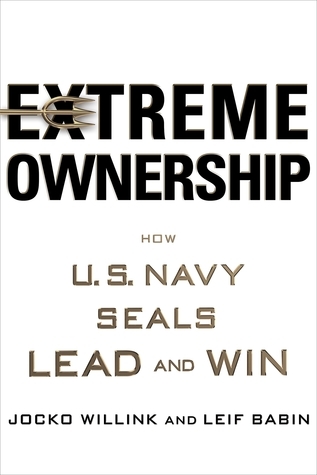A Rainy Swim, A Hard Lesson
It was raining the entire day, the kind of Saigon rain that soaks you before you even lock up your bike. Traffic was a mess, puddles splashing everywhere, and honestly, all I wanted was to stay home with a hot tea. But I had swimming practice.
When I walked into the pool that evening, barely five or six people had shown up. The coach was already there, waiting. And I felt proud that despite the storm, I showed up.
We did drills that night that tested me: arm-focused sprints, breathing that felt impossible, and 50-meter pushes where my lungs screamed. My best pace? 1:11 for 100 meters. Painful, humbling, but real.
That night, as I dried off and replayed the session, I realized something. What made me proud wasn’t just swimming in the rain. It was taking ownership of my choice to show up, no excuses. That same mindset is what Jocko Willink and Leif Babin call “Extreme Ownership.”
Their book has been a companion in my training and my leadership roles. It’s not just about war stories. It’s about discipline, accountability, and the courage to lead yourself first – principles that echo through both battlefields and triathlon courses.
About the Authors: From SEAL Teams to Boardrooms
Jocko Willink and Leif Babin are former U.S. Navy SEAL officers who led teams in some of the most dangerous missions during the Iraq War. After their service, they co-founded Echelon Front, a leadership consulting firm, translating battlefield lessons into strategies for businesses, sports teams, and individuals.
Their philosophy is simple but tough: leaders own everything in their world. No excuses, no blame-shifting. If something goes wrong, you find the solution, adapt, and execute.
When I first read Extreme Ownership, it felt like a mirror held up to my own struggles in triathlon. Training plans that went off track, injuries, races that didn’t go as planned. It was tempting to blame the weather, coaches, or timing. But the truth? Ownership always comes back to me.

Core Principles of Extreme Ownership (and How They Show Up in Triathlon)
The book is structured around key principles, each illustrated with SEAL combat stories, then applied to business. I want to take you through some of them—and show how they’ve shaped my approach to training and life.
1. Extreme Ownership
The title principle: leaders own every outcome. No excuses.
In training, I used to say, “The pool was too crowded,” or “Work drained me.” But the truth is, if I want to get better, I need to adapt – wake up earlier, find another pool, or adjust my schedule. When I bombed the swim leg at Ironman Phu Quoc, it wasn’t because of waves or competitors. It was because I hadn’t trained enough in open water. Owning that truth was painful, but it pushed me to train harder for Da Nang, where I finally finished strong.
2. No Bad Teams, Only Bad Leaders
In the book, Willink tells the story of boat crews in SEAL training. Struggling teams improved dramatically when given a new leader who demanded better.
I see this every weekend on long rides. Some days, my training group feels disorganized – people slacking, pace breaking down. But when one person steps up, sets the cadence, motivates the pack, suddenly we’re in sync. Leadership changes everything, even in a casual cycling team.
3. Cover and Move
This principle is about teamwork, covering each other so no one is left exposed.
In triathlon, though it’s an individual sport, teamwork still matters. Coaches, teammates, even the friend who sends you a 5 a.m. “Let’s run!” text. That’s cover and move. You can’t do it alone.
4. Keep It Simple
In combat, complexity leads to confusion. Same in training. When I overthink my nutrition, gadgets, or pacing strategy, I trip myself up. My best races came when I simplified: hydrate, fuel, breathe, move forward. Simple is powerful.
5. Prioritize and Execute
SEALs often face overwhelming chaos. The solution? Pick the most important problem, solve it, then move to the next.
This applies every time I hit burnout. Work deadlines, UWC committee meetings, Sunny Valley content, triathlon training – it piles up. The temptation is to do everything at once. But the book’s reminder to prioritize and execute keeps me grounded: What matters now? Do that first.
6. Decentralized Command
Leaders can’t micromanage. They must empower others to take ownership.
In my world, this shows up with my UWC selection committee. If I try to control every detail, nothing flows. But when I trust my teammates, the whole team rises. The same principle helps in group training, too: let everyone lead a piece.
Lessons Beyond the Battlefield
What I love most about Extreme Ownership is how universal it is. The battlefield might be dramatic, but the lessons apply whether you’re in an office, a classroom, or a triathlon course.
-
For Students: Stop blaming teachers or exams. Own your study habits.
-
For Professionals: Don’t point fingers at coworkers. Take ownership of your deliverables.
-
For Athletes: Weather, equipment, bad days – accept them. Own the training, own the race.
Every time I feel like complaining, I remember one of Jocko’s famous lines: “Discipline equals freedom.” The more disciplined I am about rest, training, even recovery, the freer I feel on race day.
A Personal Turning Point
I remember the night after my failed Ironman Phu Quoc swim. I was devastated. Months of training, and I couldn’t get past the first leg. I sat there thinking, maybe I’m just not a swimmer.
Then I reread Extreme Ownership. The message hit me differently that night: it wasn’t about failure, it was about accountability. I didn’t prepare for rough open-water conditions. I didn’t practice enough sighting. I owned it.
That shift changed everything. I went back to basics: early-morning pool sessions, drills that humbled me, ocean training with teammates. By the time Ironman Da Nang came, I wasn’t just stronger, I was mentally steadier. And when I finally crossed that finish line, it wasn’t luck. It was ownership.
Strengths of the Book
-
Straightforward Lessons: No fluff. Each principle is clear, repeated through war stories and business applications.
-
Real-Life Relevance: Whether you’re a manager, athlete, or student, you’ll find yourself nodding along.
-
Discipline Mindset: The mantra of discipline and accountability is something we all need more of.
Gentle Critiques
No book is perfect, and here’s what stood out:
-
Repetition: Some principles feel repeated with different stories.
-
Military Tone: The combat-heavy narrative might not resonate with everyone. If you’re not into war stories, you might skim parts.
-
Hardline Approach: Extreme Ownership is powerful, but in life, balance matters. Sometimes external factors really do play a role.
Still, even with these critiques, the book delivers value.
If you’re training for your own “Ironman,” whether literal or metaphorical, Extreme Ownership gives you the mindset tools to push through. It’s about more than leadership. It’s about resilience, humility, and responsibility.
And here’s the real kicker: once you embrace ownership, excuses lose their power. You start seeing challenges not as roadblocks, but as training grounds for growth.
From SEALs to Swimming Lanes
That rainy night in the pool, I didn’t just train. I learned what ownership feels like. Showing up despite discomfort, pushing through sprints that made me want to quit – that was my battlefield.
Jocko Willink and Leif Babin’s Extreme Ownership reminds us that leadership isn’t about titles. It’s about mindset. Whether leading a SEAL team, a company, or yourself on a triathlon course, the principle is the same: Own it all.
So next time life rains on you, literally or figuratively, remember: you can’t control the storm, but you can own your response. And that changes everything.

